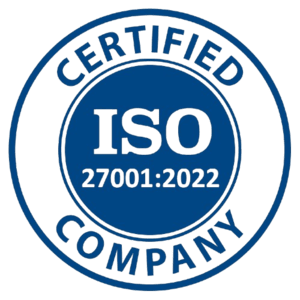Learning and development is a process that helps employees gain new knowledge, skills, and expertise through training, workshops, webinars, on-the-job learning, etc.
Training and development always help companies stay ahead of the competition and do well in their profession. In the article, we will learn what role Learning and Development play in company success.
"80% of employees said learning and development opportunities would help them feel more engaged on the job."
Benefits of Learning and Development (L&D)
Learning and development provide numerous benefits:
- Improved Employee Performance: Learning and Development (L&D) is crucial to improving employee performance, as it helps employees acquire new skills and knowledge, hence improving their overall performance. Additionally, employees can stay updated on industry trends and developments by participating in continuous learning programs.
- Increased Employee Engagement & Talent Retention: L&D sessions boost employee engagement and increase talent retention by upgrading them continuously in their career. Engaged employees usually contribute more to the workplace and remain strongly committed to their jobs. Holding training and development programs shows that companies are investing time in improving employees’ skills, knowledge, and expertise.
It also creates career growth opportunities for employees within the organization. Learning and development build a great learning environment that helps retain top talent. - Improved Organizational Performance: Learning and development (L&D) get employees better at doing their work quickly and easily as the company has helped them get those skills with its L&D initiatives.
A well-trained and upskilled employee makes the company work smoothly. This way, organizations can build a great team and improve their performance over time. L&D also encourages everyone to keep learning and helps companies stay ahead in their industry. - Improved Leadership Skills: Employees can improve their leadership abilities through targeted training provided by learning and development programs.
Training and development allow employees to gain practical leadership experience that makes them more confident in handling different situations.
Good leadership skills are required for building a conducive environment in the company for success. - Improved Communication and Collaboration: Learning and Development (L&D) provides group learning opportunities that improve employee communication and collaboration.
L&D allows employees to connect with others and share their ideas, which helps employees work together effectively.
Good communication skills help in understanding people and situations better. - Improve Problem-Solving Skills: L&D programs help employees improve their problem-solving abilities, such as critical thinking, data analysis, and more.
Good problem-solving skills help people identify and solve problems, and make decisions that lead to successful outcomes.
However, Learning and development teach employees how to think carefully and logically to analyze things.
"47% of higher educated workers said a limited career path could get them to leave for a better opportunity."
Different Methods Used for Learning and Development
Many different methods are used for learning and development because one method does not work for every organization. The best strategy depends on the learning style and resources available to you. Following are some of the methods you can use for training and development:
- Classroom Training: Classroom training is a structured learning method where instructors teach students in person or online. This method allows students to interact with professionals in real-time, participate in Q&A sessions, and share feedback simultaneously. Furthermore, classroom studies make the learning experience better for everyone.
- E-Learning: E-learning is an important part of today’s L&D as it creates customized training programs. It helps organizations flexibly learn new skills. E-learning includes online training like video lectures, webinars, podcasts, and more. Learners can study the topics and engage with materials conveniently online.
- On-the-Job Training: This method lets employees learn necessary knowledge and skills from more experienced colleagues. Employees get hands-on experience that helps them excel and gain fresh skills while performing regular tasks.
- Mentoring and Coaching: Mentoring is like having a supportive buddy who helps you learn new things and upgrade old ones. A mentor guides and supports individuals as they grow in their careers. On the other hand, coaching lets one improve their skills, abilities, and proficiency. Even coaches help and support learners to achieve their specific goals.
- Microlearning: Microlearning is a great learning method in the L&D program that teaches short and focused lessons to learners. Instead of long, complicated sessions, it breaks down information into small, focused parts. However, microlearning helps learners remember the information better.
- Cross-Training: Cross-Training is a training method that teaches an employee to do another employee’s job. This method makes every member of the team capable of handling a variety of tasks and responsibilities. Cross-training expands employee skillsets so they can fill in for one another and perform their work when needed.
- Targeted Training: Targeted training is a strategic approach that uses a mix of formal and informal learning to close skill gaps. It focuses on providing targeted training to individuals or groups to enhance specific required skills. Generally, targeted training involves a detailed analysis of the skills and knowledge gaps, and then the training is created to fill those gaps.
- Learning from Case Studies: Case studies allow learners to gain theoretical knowledge and experience practical situations. It also enables learners to analyze and discuss various circumstances, which actively increases engagement between them. Case studies usually provide participants with an opportunity to enhance their soft skills, such as communication, teamwork, and social skills.
How to Develop a Learning and Development Strategy?
When developing a learning and development strategy, you must ensure that it aligns with your organization’s goals. You need to put some extra effort into creating learning and development plans. The following steps will help you create a robust Learning and Development Strategy for your organization.
- Define Your Business Objectives: Define what the organization wants to achieve through the learning and development (L&D) program. Hold an internal meeting to set specific business objectives. Once you clearly understand your organization’s goals, you can focus on providing your employees with the necessary training and knowledge.
Aligning business goals and learning objectives is very important for an organization’s success. - Do a Skills Gap Analysis: Figure out what talent your organization needs based on the industry. Do a survey or take a test to identify what skills employees currently have and what skills they are lacking. Take advice from top expert leaders to learn more about specific required skills. After that, do an in-depth analysis and decide what skills are important for reaching your business goals.
If it is not done properly then it is nothing but just a waste of time and effort. - Set Clear L&D Budget: Figure out how much the cost will be for training sessions, such as technology, study materials, instructor fees, and external resources. Consider spending additional money on technology and systems that will help in the long run.
Setting the budget is important as no one has infinite resources to spend. - Choose Learning Methods: Choosing the right learning method is important for providing effective training experiences to learners. Evaluate which training approach is perfect for your team.
Make sure the selected method matches the learning objectives, whether it is classroom training, e-learning, or on-the-job training. Picking an appropriate learning method improves the learning experience and helps organizations achieve their goals. - Create Engaging Content: After choosing the learning method, focus on creating well-structured content for the L&D program. Make the learning material engaging, interesting, and easy to understand.
Use images, videos, and infographics to make learning material more appealing. Make sure that the content is up-to-date and relevant.
Having good content ensures that people grasp the concept really well, otherwise, it won’t add much value to the organization. - Implement and Assess Your L&D Strategy: Once you are done with the learning method and content, focus on implementing the learning development event. First, inform your employees about the L&D session and how it can benefit them.
After the successful completion of the L&D program, track their overall performance. Collect feedback from employees, managers, and top leaders to assess the effectiveness of the learning and development (L&D) event.
Conclusion
Learning and development (L&D) plays a vital role in shaping the success of an organization. When companies put effort into improving their employee’s skills and expertise, it benefits not only the employees but also the company and its performance. Generally, companies that prioritize learning and development build a strong foundation and succeed in the long run.
Here's how Airmeet Facilitates Learning and Development
FAQ
Learning and Development are continuous processes that never end. Continuous learning is necessary to keep updated with market developments, technological advancements, and changing organizational needs. L&D programs must be updated and modified regularly.
Yes, Learning and Development help create a supportive and positive workplace. It builds a culture of continuous improvement, skill development, and employee engagement





























